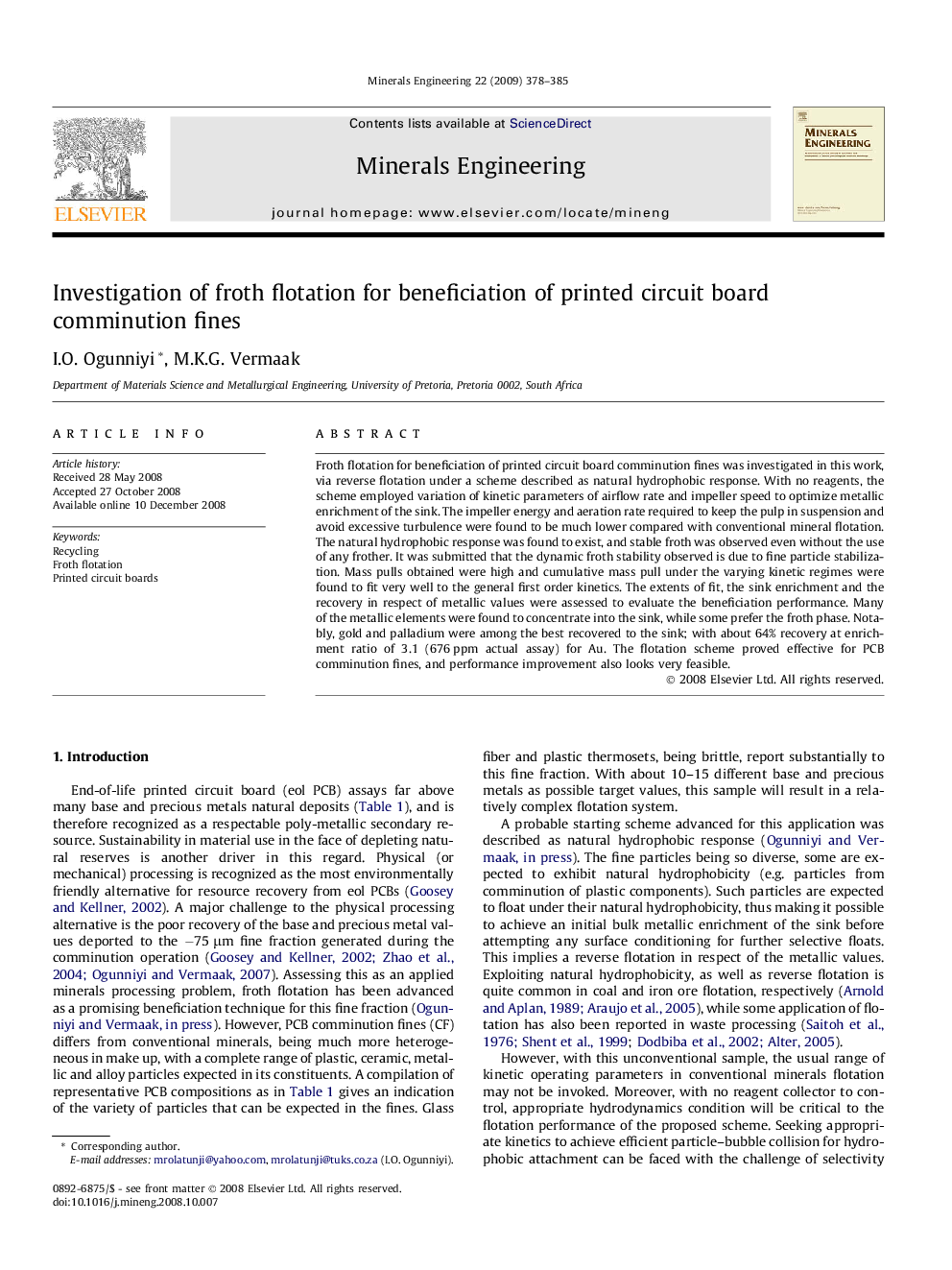| Article ID | Journal | Published Year | Pages | File Type |
|---|---|---|---|---|
| 234412 | Minerals Engineering | 2009 | 8 Pages |
Froth flotation for beneficiation of printed circuit board comminution fines was investigated in this work, via reverse flotation under a scheme described as natural hydrophobic response. With no reagents, the scheme employed variation of kinetic parameters of airflow rate and impeller speed to optimize metallic enrichment of the sink. The impeller energy and aeration rate required to keep the pulp in suspension and avoid excessive turbulence were found to be much lower compared with conventional mineral flotation. The natural hydrophobic response was found to exist, and stable froth was observed even without the use of any frother. It was submitted that the dynamic froth stability observed is due to fine particle stabilization. Mass pulls obtained were high and cumulative mass pull under the varying kinetic regimes were found to fit very well to the general first order kinetics. The extents of fit, the sink enrichment and the recovery in respect of metallic values were assessed to evaluate the beneficiation performance. Many of the metallic elements were found to concentrate into the sink, while some prefer the froth phase. Notably, gold and palladium were among the best recovered to the sink; with about 64% recovery at enrichment ratio of 3.1 (676 ppm actual assay) for Au. The flotation scheme proved effective for PCB comminution fines, and performance improvement also looks very feasible.
